Potrebujeme váš súhlas na využitie jednotlivých dát, aby sa vám okrem iného mohli ukazovať informácie týkajúce sa vašich záujmov. Súhlas udelíte kliknutím na tlačidlo „OK“.
ASTM D7203-11
Standard Practice for Screening Trichloroethylene (TCE)-Contaminated Media Using a Heated Diode Sensor
Automaticky preložený názov:
Štandardné praktiky pre premietanie trichlóretylén (TCE) -Contaminated médiu pomocou diód senzora Vyhrievané
NORMA vydaná dňa 1.7.2011
Informácie o norme:
Označenie normy: ASTM D7203-11
Poznámka: NEPLATNÁ
Dátum vydania normy: 1.7.2011
Kód tovaru: NS-37855
Počet strán: 14
Približná hmotnosť: 42 g (0.09 libier)
Krajina: Americká technická norma
Kategória: Technické normy ASTM
Kategórie - podobné normy:
Anotácia textu normy ASTM D7203-11 :
Keywords:
field screening, halogenated volatile organic compounds (HVOCs), heated diode sensor, soils, trichloroethylene (TCE), water, Waste managment activities, Halogen compounds, Heated diode sensor, Soil, Trichloroethylene, Volatile organic compounds (VOC), ICS Number Code 13.080.10 (Chemical characteristics of soil)
Doplňujúce informácie
| Significance and Use | ||||
|
The heated diode sensor device used in this practice is selective for HVOCs. Other electronegative compounds, such as alcohols, ketones, nitrates, and sulfides, may cause a positive interference with the performance of the heated diode sensor to detect HVOCs, but to do so, they must be present at much higher concentrations than the HVOCs. Note 2—For volatile organic compound (VOC) screening purposes, a flame ionization detector (FID) selectively responds to flammable VOCs; a photoionization detector (PID) selectively responds to VOCs having a double bond; and a heated diode sensor selectively responds to halogenated VOCs. This practice can be used for screening media known to contain TCE to estimate the concentration of TCE in the media. Procedure A is to be used for screening soil known to contain TCE and Procedure B is to be used for screening water known to contain TCE. Both Procedures A and B involve measuring the TCE concentration in the headspace above a sample. From this measurement, an estimated concentration of TCE in the sample can be determined. Any TCE remaining in the sample is not measured by this practice. Any other HVOC present in the sample will be reported as TCE. This practice can also be used for screening the headspace above a soil or water suspected of containing HVOC contamination to indicate the presence or absence of HVOC contamination in the soil (Procedure A) or water (Procedure B). Any HVOC contamination remaining in the sample is not detected by this practice. Detection Limit—The detection limit of the heated diode sensor for TCE is 0.1 mg/m3 in air, based on a signal-to-noise ratio of 2. For a 25-g TCE-contaminated soil sample in a 250-mL container, the detection limit of Procedure A for TCE is 0.001 mg/Kg, assuming complete partitioning of TCE into the headspace. For a 25-g TCE-contaminated water sample in a 250-mL container, the detection limit of Procedure B for TCE is 0.001 mg/L, assuming complete partitioning of TCE into the headspace. This practice can be used to screen moist soil samples and water samples. Water vapor does not interfere with the performance of the heated diode sensor. Hydrocarbon fuels, including fuels containing aromatic compounds, such as gasoline, are not detected by the practice. |
||||
| 1. Scope | ||||
|
1.1 This practice describes procedures for screening media known to contain the halogenated volatile organic compound (HVOC), trichloroethylene (TCE). Procedure A is to be used for screening soil known to contain TCE and Procedure B is to be used for screening water known to contain TCE. 1.1.1 Both Procedures A and B involve measuring the TCE concentration in the headspace above a sample using a heated diode sensor device. From this measurement, an estimated concentration of TCE in the sample can be determined. Any TCE remaining in the sample is not measured. Any other HVOC present in the sample will be reported as TCE. 1.2 Procedure A can also be used for screening the headspace above a soil suspected of containing HVOC contamination to indicate the presence or absence of HVOC contamination in the soil. Procedure B can also be used for screening the headspace above a water suspected of containing HVOC contamination to indicate the presence or absence of HVOC contamination in the water. For both procedures, any HVOC contamination remaining in the soil or water is not detected by this practice. 1.3 The values stated in SI units are to be regarded as standard. No other units of measurement are included in this standard. 1.3.1 Exception—Certain inch-pound units are provided for information only. 1.4 This standard does not purport to address all of the safety concerns, if any, associated with its use. It is the responsibility of the user of this standard to establish appropriate safety and health practices and determine the application of regulatory limitations prior to use. Note 1—The diode sensor is heated to temperatures ranging between approximately 600 and 1000 ºC (see 6.1.5) and as a result could be a source of ignition. |
||||
| 2. Referenced Documents | ||||
|
Podobné normy:
Historická
1.1.2013
Historická
1.11.2006
Historická
15.6.2010
Historická
1.7.2009
Historická
1.6.2009
Historická
17.5.2013
Odporúčame:
Aktualizácia zákonov
Chcete mať istotu o platnosti využívaných predpisov?
Ponúkame Vám riešenie, aby ste mohli používať stále platné (aktuálne) legislatívne predpisy
Chcete vedieť viac informácií ? Pozrite sa na túto stránku.


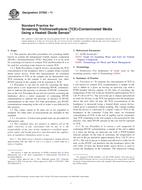
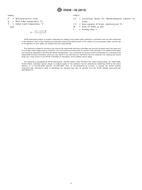 ASTM D5258-02(2013)..
ASTM D5258-02(2013)..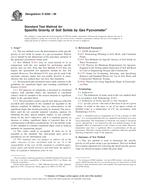 ASTM D5550-06
ASTM D5550-06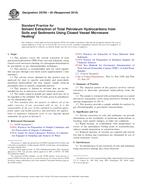 ASTM D5765-05(2010)..
ASTM D5765-05(2010)..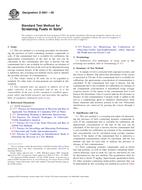 ASTM D5831-09
ASTM D5831-09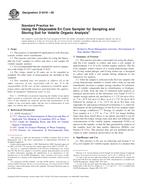 ASTM D6418-09
ASTM D6418-09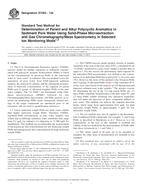 ASTM D7363-13a
ASTM D7363-13a
 Cookies
Cookies
